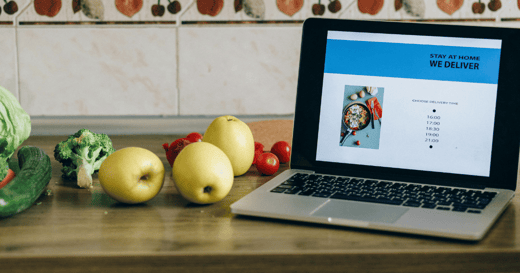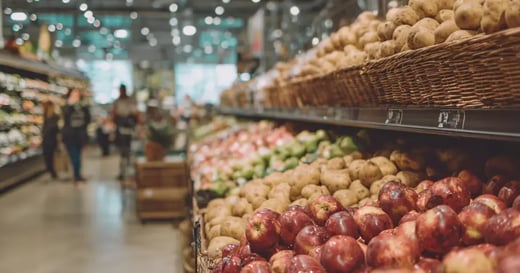Look at these statistics:
- 15 percent of shoppers say they’ve stolen items while using a self-checkout kiosk
- 44 percent said they would do it again
- 61 percent of shoppers who accidentally take an item would keep it anyway
While self-checkout is a convenient way to shop, these statistics make frightening reading for grocery store owners. While shrinkage happens for various reasons, self-checkout kiosks make it easier to steal.
With already-thin profit margins, can you afford these losses?
On the other hand, self-checkout kiosks have clear benefits; if managed correctly, your grocery store can provide a convenient shopping experience and save on operational costs.
Walmart recently removed self-checkout from three of its stores. However, it doesn’t plan to remove kiosks from all of its stores, highlighting an important nuance: You have to do what’s right for your grocery store and customers.
So, is self-checkout going away? Let’s find out.
Is Self-Checkout Going Away?
The short answer? No, self-checkout isn’t going away anytime soon. The long answer? Still no, but it is changing. It's definitely evolving as technology evolves, and grocery stores are trying to overcome challenges in an effort to keep up.
Customers get frustrated when a self-checkout kiosk spits out an error code. If a staff member doesn’t man kiosks, customers can be left waiting for approval for age-restricted items, and they’re fed up with hearing “unexpected item in the bagging area.”
These things might seem trivial, but from a customer standpoint, they’re frustrating.
Related Read: 5 Best Self-Checkout Machine Options for Grocery Stores in 2024
Rising shrinkage is one major challenge for grocery stores. From customers forgetting to scan items to outright theft, self-checkout kiosks cost grocery stores millions each year.
However, there are also tangible benefits for grocery stores and customers. Grocery stores can save on labor costs and tackle staff shortages. Customers who prefer a contactless experience and want to avoid long lines can use self-checkout kiosks at their own pace.
Benefits and challenges aside; is self-checkout right for your store? Here are six things to consider.
#1: Consumer Preferences Play a Major Role
While some customers appreciate the speed and convenience of self-checkout kiosks, others want the human interaction that comes with manned checkout lanes.
Tech-savvy customers might feel more comfortable with self-checkout. According to one survey, 43 percent of shoppers want to handle transactions independently, with more than half of consumers aged 18 to 44 choosing self-checkout.
Others may prefer the traditional checkout experience with a human cashier. Scanning and weighing items can feel cumbersome and out of reach for older shoppers — using a regular checkout solves for this.
What do your customers want? Consider customer preferences and ensure you can offer a user-friendly experience. Technical glitches and usability issues could drive customers away.
Pro tip: Use your point of sale (POS) system to get reports on customer preferences. If you have customer information stored in your POS, send surveys asking what your customers prefer.
#2: Theft and Shrinkage are on the Rise
Self-checkout theft contributes to shrinkage, with losses totaling 3.5 percent of sales. This is sixteen times more loss than regular checkout lanes. Kiosks are often left unmonitored, making it hard for grocery stores to keep track of theft and inventory loss during busy periods.
While shrink is on the rise, are these statistics relevant to your store? Possibly. However, different locations are more prone to theft. It’s essential to analyze shrink at the local or even store level to find the true impact of shrinkage at the self-checkout.
Many grocery stores are trying to combat shrink with various methods:
- Weight sensors that can detect if you've bagged something without scanning it
- Security cameras keeping a watchful eye on every self-checkout lane
- Guards stationed at exits
But thieves find a way around these measures. So, what’s the solution? That’s the million-dollar question. You could scale back self-checkout or double down on security measures. In the long term, you have to weigh the pros and cons of self-checkout — does the convenience outweigh the potential risks of shrinkage and theft?
Related Read: How To Reduce Shrinkage: 5 Expert Tips for Grocery Stores
#3: Labor and Operational Costs are Top Priorities
When self-checkout started to gain steam, part of the allure was the potential to slash labor and staffing costs. Why pay a team of cashiers when you can have a few self-checkout attendants overseeing multiple kiosks?
On paper, it makes sense. In reality, it’s not so simple. Finding and retaining quality employees is harder than ever.
Related Read: 5 Simple Ways for Grocery Stores To Retain Employees
There’s an ongoing labor shortage and rising minimum wages to contend with. Does it make more sense to keep staffed checkout lanes open, where friendly human cashiers can provide a personalized shopping experience and help deter theft and shrinkage?
Again, you need to do what’s right for your grocery store.
Also, consider the costs of operating self-checkout kiosks. They’re not just plug-and-play. They need regular maintenance, software updates, and occasional hardware upgrades to run smoothly. You’ll also need to train your staff to operate and sometimes troubleshoot your kiosks.
#4: Technology and Alternative Solutions are On the Way
As artificial intelligence (AI) and machine learning (ML) continue to advance, self-checkout technology will evolve. It’s inevitable — and new technologies are already in play:
- Scan and go: While not ‘new,’ scan and go barcode scanners and mobile apps continue to improve. They let shoppers scan items as they shop and pay with a tap of their credit card, debit card, or mobile phone.
- Automated stores: Automated stores (like Amazon Go) take self-checkout to a different level. Customers can walk into a store, grab what they need, and walk out — no checkout required.
- Self-checkout upgrades: Manufacturers are improving their systems with better weight verification, more accurate barcode scanning, and even age verification capabilities.
If your grocery store wants to stay relevant, you need the most up-to-date self-checkout kiosks. A smooth and glitch-free experience is key.
#5: A Hybrid Approach is the Way To Go
For now, a hybrid approach is your best bet. You might already be doing it — you have a mix of regular checkouts and self-checkout lanes — and both can create the right shopping experience.
Related Read: Self-Checkout vs. Cashier Lanes: What's Best for a Grocery Store?
Many customers still love getting their groceries in-store. They can choose their produce, find the best deals, and interact with employees. While online shopping is convenient, it doesn’t work for everyone, so it's even more important to ensure customers get the best in-store experience.
Another possible route is a convertible register:
.webp?width=400&height=400&name=Luke%20Henry%20self-checkout%20quote%20(2).webp)
Shrink changes based on location. If you are unsure, you need a POS that can help you get an accurate read on shrink and a self-checkout solution that could be re-purposed as a lane if your store fails the shrink test.
Our self-checkout solution is under $5000, and the traditional Self-Checkout is around $40,000. Whether you have a cost-effective or expensive self-checkout with all the anti-theft tech, your shrink will not change.
#6: Which Type of Store is Self-Checkout Best For?
Larger chains have more scope for experimentation. They might trial more self-checkout lanes than regular, and if it doesn’t work out, switch back. Small, independent stores might not have the capital. Here’s a side-by-side comparison:
|
Large Grocery Stores |
Small Grocery Stores |
|
With high customer traffic, self-checkout is a great way to reduce long checkout lines |
With fewer customers at a given time, the wait for a cashier is typically shorter, reducing the need for self-checkout |
|
With a large staff, they can have dedicated employees monitor self-checkout areas |
Smaller staff sizes make it harder to have employees dedicated to overseeing self-checkout |
|
A higher number of transactions leads to higher labor cost savings |
Fewer transactions mean the labor cost savings from self-checkout aren't as substantial |
|
They tend to have larger physical spaces to accommodate self-checkout stations without feeling cramped |
Smaller stores may not have enough space to install self-checkout stations without compromising traffic flow |
What will work for your store comes down to your customer base — and their preferences — and how you run your store.
ANSWERED: Is Self-Checkout Going Away?
Self-checkout won’t be going anywhere for now, but its future is uncertain. Considering everything above, it’s not a one-size-fits-all solution. Whether you should implement or take away self-checkout kiosks depends on your needs and customer preferences.
At IT Retail, we can definitively say that your POS system plays a role in making self-checkout a success in your grocery store. It provides valuable insights into customer behavior, sales patterns, and areas for improvement.
Before you make any decisions, schedule a demo with our grocery experts. They’ll walk you through our self-checkout kiosks and answer any questions you have about implementing them in your grocery store.






 by Margaret Thacker
by Margaret Thacker


